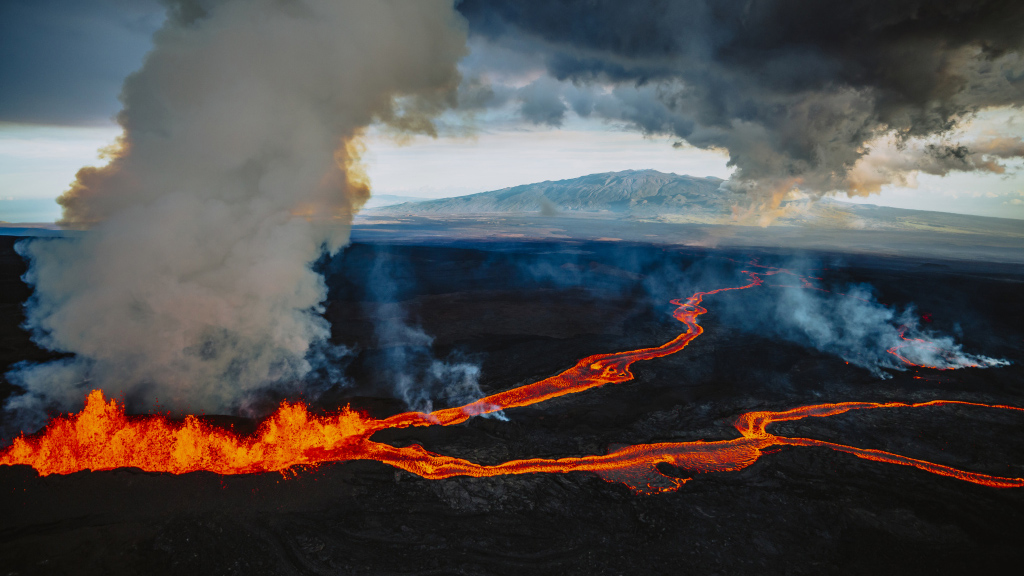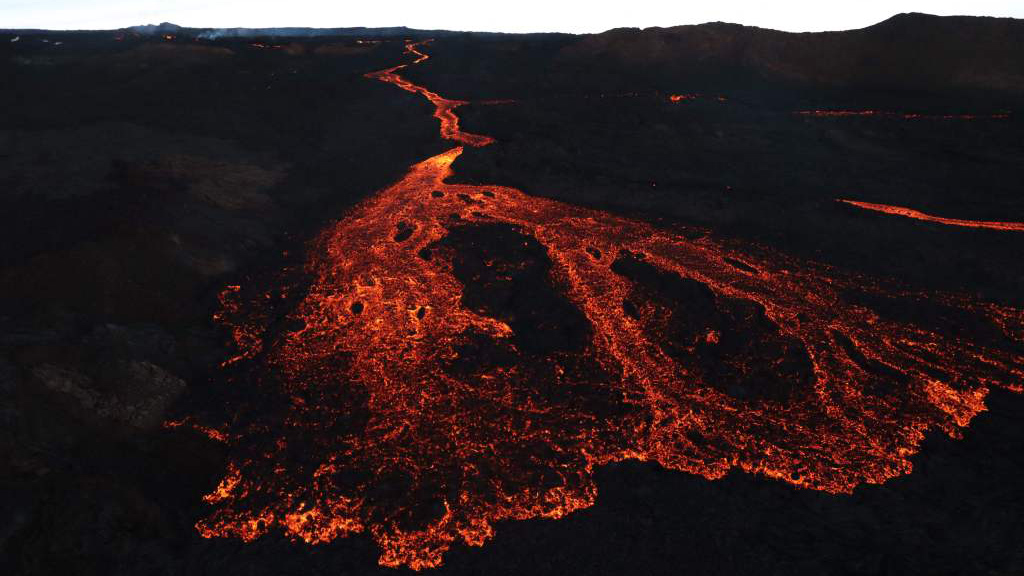Fountains of lava and rivers of molten rock were continuing spewing from the world's biggest volcano Friday, as Mauna Loa in Hawaii's first eruption in almost four decades showed no signs of abating.
Two fissures on Mauna Loa were venting huge volumes of viscous rock and gases from deep within the Earth, in a thunderous display of the power of nature.

Lava fissures flow downslope from the north flank of Mauna Loa Volcano as it erupts on November 30, 2022. /CFP
Lava fissures flow downslope from the north flank of Mauna Loa Volcano as it erupts on November 30, 2022. /CFP
Vulcanologists said they were watching lava flows heading towards a highway on Hawaii's largest island, though they still believe the eruption, which began November 27, posed no immediate threat to humans.
"The Northeast Rift Zone eruption of Mauna Loa continues, with two active fissures feeding lava flows downslope," the United States Geological Survey (USGS) said on Thursday.
"Fissure 3 remains the dominant source of the largest lava flow. The fissure 3 lava flows are traveling to the north toward the Daniel K. Inouye Highway but have reached relatively flatter ground and have slowed down significantly as expected."
The flow front of the lava is about 4.34 kilometers from the Daniel K. Inouye Highway, according to an update by the Hawaii County Civil Defense Agency on November 2.

An aerial image of the distal end of a lava flow from Mauna Loa's Northeast Rift Zone on the morning of November 30, 2022 in Hawaii. /CFP
An aerial image of the distal end of a lava flow from Mauna Loa's Northeast Rift Zone on the morning of November 30, 2022 in Hawaii. /CFP
The other fissure still producing lava is sending it northeast, while plumes of volcanic gas were lofting high into the air. And the Pele's Hair, fine strands of volcanic glass, was falling to earth.
Scientists say their seismic monitoring equipment was detecting a large number of earthquakes around the two active fissures. "This indicates that magma is still being supplied, and activity is likely to continue as long as we see this signal," the USGS said.
(With input from AFP, cover image via CFP.)
(If you want to contribute and have specific expertise, please contact us at nature@cgtn.com.)